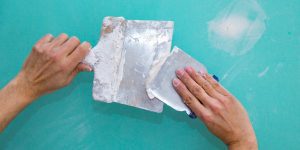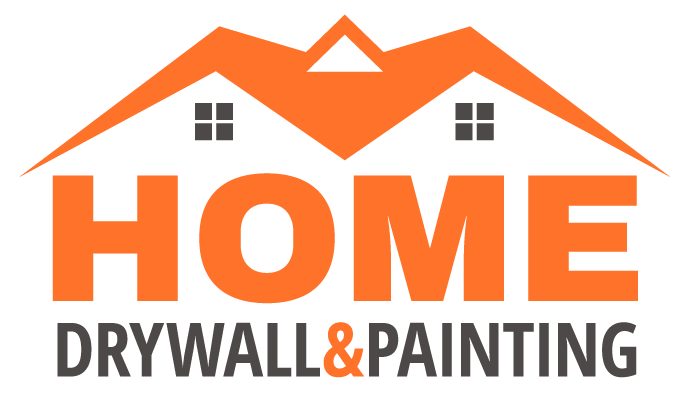 Drywall, more commonly known as plasterboard, is a material made of gypsum that’s used as a wall and ceiling building material. The most common types of drywall are called “gypsum board,” “sheetrock,” or just plain “drywall.” Drywall is so popular because it’s easy to work with and cheap. It can be installed without any special tools or skills beyond those required for painting and finishing carpentry projects. However, if your drywall is damaged, it’s important to contact your local contractor for drywall repair before the problem gets worse. Drywall Repairs in Denver CO
Drywall, more commonly known as plasterboard, is a material made of gypsum that’s used as a wall and ceiling building material. The most common types of drywall are called “gypsum board,” “sheetrock,” or just plain “drywall.” Drywall is so popular because it’s easy to work with and cheap. It can be installed without any special tools or skills beyond those required for painting and finishing carpentry projects. However, if your drywall is damaged, it’s important to contact your local contractor for drywall repair before the problem gets worse. Drywall Repairs in Denver CO
What is Drywall?
Drywall is the most common wall material used in the United States. It’s made from gypsum plaster, paper, and glue. Drywall can be easily cut with a utility knife and can be painted or textured with drywall compound.
It’s lightweight and easy to work with, so it’s perfect for DIYers looking for an affordable way to spruce up their home’s interiors. Homeowners can find drywall at hardware stores, where it comes in 4×8-foot sheets that are easy to transport and install yourself (compared with other materials like brick).
Drywall damage is easy to spot because cracks will often appear on both sides of the damaged area. However, if you’re unsure whether you’ve got water damage or simply need some touch-up painting done, call in a professional contractor instead of trying out your hand at DIY repairs yourself. Contractors can help identify whether your issue is caused by water intrusion or another issue altogether (such as improper installation), which may save time and money in the long run!
Drywall Damage Can Be Easy to Spot
Drywall damage is a common occurrence, and it’s generally easy to spot if you know what you’re looking for. When the drywall is damaged, it can be a sign of bigger problems in your home. The most common causes of drywall damage are water, fire, or bad installation. To inspect the condition of your existing walls more closely, use a flashlight and get on your hands and knees with your head just below eye level, or lay on the floor with your head tilted toward one end of the wall. Make sure that there aren’t any signs of moisture or mold growth beneath the surface layers before moving forward with repairs or replacements because these issues could lead to further structural problems later on down the road!
Drywall repair is often considered a simple DIY project but we suggest using caution when dealing with any type of construction work because it can be dangerous if done incorrectly – especially when repairing damaged areas near electrical wires so make sure someone knows exactly what they’re doing before attempting such projects yourself! Waterproofing also helps protect against future damage by preventing water damage from seeping through cracks into surrounding walls which could cause mold growth later.
Drywall Damage Can Indicate Bigger Problems
Drywall damage can be a sign of bigger problems. Drywall damage is often caused by water damage and fire damage, so it’s important to inspect for both when you’re assessing the situation. Water damage can make drywall damage worse, as well as lead to mold growth. Fire damage can also worsen drywall problems because smoke and soot from fires will discolor and weaken the drywall’s surface. If there are cracks in your wall, that wall is probably not very strong anymore—and if there are cracks in your floor or ceiling (which usually have less support than walls), that part of the structure is probably compromised too!
If you notice that your walls are sagging, it could be a sign of poor drywall installation. This can happen when the installer didn’t tack down the drywall firmly enough or if they used the wrong type of adhesive.
If you’re worried about a potential problem with your drywall, especially if you have recently moved into a new home, check for gaps between the wall and ceiling in each room. If you see any irregularities along any part of an entire wall section then there may be an issue that needs further inspection.
Water Damage Can Worsen Drywall Damage
Water damage can also worsen drywall damage. Water expands when it freezes, which can cause your drywall to expand and contract. This will cause cracks in the drywall, causing it to look ugly and forcing you to replace the entire section of drywall. Water can also cause warping in the panels or sag them down on one side. If this happens, it means that there’s a problem with either how strong your house’s foundation is or how much insulation there is around your home (or both).
Water damage can also discolor your walls and make them look dirty even if they’re not dirty yet. Mold spores grow on wet materials so if you have moisture buildup near an area where mold has already been growing before—like near an open window or leaky roof—then new mold growths may appear on top of old ones as well!
Drywall damage, especially if it’s in a hidden area of your home, can be an indicator of bigger issues. For example, you might notice holes in the drywall that are unusually large and appear to have been caused by something more than just normal wear and tear. This may indicate water damage or fire damage—or even a bad installation job!
Drywall Repairs in Denver CO
With so many types of damage and ways to fix them, it’s important to know what you’re dealing with and how to handle it. If you have questions about your drywall problem, don’t hesitate to call us at Home Drywall and Painting in Denver, Colorado! We can help answer any questions you may have or provide a quote for the job.
